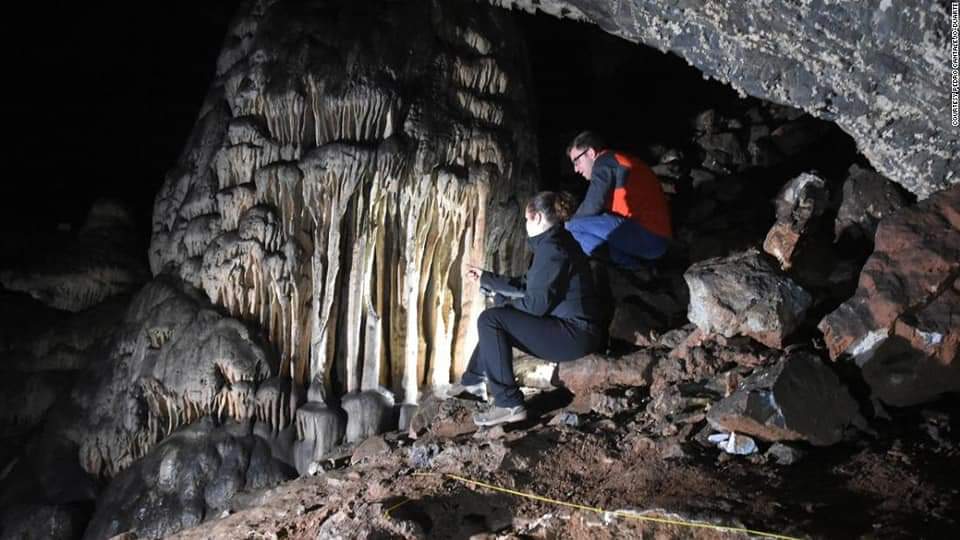Sanlyurfa is a city in southeastern Turkey. In October 1994, while preparing his farm in the mountains of Gobekli Tepe, about 12 km from here, a farmer named Savak Yildiz saw a rock rising from the ground in a special way. Curious to know what it was, he turned the soil around and realized that it was the tip of a limestone rock that was going deeper. He approached the nearest archeological site to find out what unusual rock he had found on his farm. They commissioned Klaus Schmidt of the German Archaeological Institute in Istanbul to investigate. His team began excavating the area for further discoveries.

Surprising views awaited the researchers in later days. As they dug to greater depths, they were first greeted by a large T-shaped English word. When you dig to the bottom of the rock, there is a circular wall made of small stones around the rock. Inside the circle are two unusually large T-shaped boulders facing each other in limestone. Each of these stones is engraved with images of animals, birds, and small insects, as well as symbols that have yet to be interpreted. It is estimated that each of these T-shaped rocks weighs about 20 to 50 tons. Six such sites have been excavated over the past 25 years from the Gobekli Tepe hill.
Archaeologists estimate that a group of 50 men worked tirelessly to bring a T-shaped rock to the top of the hill from a nearby limestone mine. In addition, the carvings on each pillar would take many more hours. In that sense, it is estimated that it may take many years to complete the six structures now discovered. According to ground-penetrating radar, hundreds of such large pillars are still buried in the ground. This is about fifty times the cost of Stonehenge in England. So how many years of human labor could have been spent on this …?.

The researchers’ next inquiry was into why primitive man had built such a vast structure. Researchers confirm that this was not a place where humans lived as a community. There are no man-made gardens or farms near it. Although it was initially thought to be a burial ground, no evidence of it has been found. All that was found were the bones of wild animals. Some experts claim that this may be the first temple of man, but no traces of it, no altar, or the remains of sacrificial animals have been found.
Giulio Magli, an archaeologist and astronomer from Milan, Italy, concluded that it was an ancient observatory. According to Julio Magli, who recreated the sky during the construction of Gobekli Tepe using computer simulation, Gobekli Tepe was the center for observing the star Sirius in the constellation Canis Major. He elaborates on this in the August 14, 2013 issue of New Scientist magazine.
That’s not what makes Gobeckley Tepe a mystery today. Researchers have been shocked by the results of carbon dating to determine the chronology of the Gobekli tepe, which dates back to 12,600 years ago, exactly 11,600 years ago. Gobekli Tepe was built thousands of years before the Play.

What is the riddle here …? What we learn in our textbooks today is that the Neolithic transformation that took place about five to six thousand years ago taught hunted man to cultivate and live together as a community. The modern conclusion is that religions, science and art developed during this period. So how can we believe that man made such a complex structure seven thousand years before the Neolithic Age? That is why we have to think that we have lost some important chapters from human history. It may have been a worldwide tragedy that destroyed those chapters forever. However, structures such as the Gobekli Tepe still remain here as relics.
On Thomas Chalaman
Sanlyurfa is a city in southeastern Turkey. In October 1994, while preparing his farm in the mountains of Gobekli Tepe, about 12 km from here, a farmer named Savak Yildiz saw a rock rising from the ground in a special way. Curious to know what it was, he turned the soil around and realized that it was the tip of a limestone rock that was going deeper. He approached the nearest archeological site to find out what unusual rock he had found on his farm. They commissioned Klaus Schmidt of the German Archaeological Institute in Istanbul to investigate. His team began excavating the area for further discoveries.
Surprising views awaited the researchers in later days. As they dug to greater depths, they were first greeted by a large T-shaped English word. When you dig to the bottom of the rock, there is a circular wall made of small stones around the rock. Inside the circle are two unusually large T-shaped boulders facing each other in limestone. Each of these stones is engraved with images of animals, birds, and small insects, as well as symbols that have yet to be interpreted. It is estimated that each of these T-shaped rocks weighs about 20 to 50 tons. Six such sites have been excavated over the past 25 years from the Gobekli Tepe hill.
Archaeologists estimate that a group of 50 men worked tirelessly to bring a T-shaped rock to the top of the hill from a nearby limestone mine. In addition, the carvings on each pillar would take many more hours. In that sense, it is estimated that it may take many years to complete the six structures now discovered. According to ground-penetrating radar, hundreds of such large pillars are still buried in the ground. This is about fifty times the cost of Stonehenge in England. So how many years of human labor could have been spent on this …?.
The researchers’ next inquiry was into why primitive man had built such a vast structure. Researchers confirm that this was not a place where humans lived as a community. There are no man-made gardens or farms near it. Although it was initially thought to be a burial ground, no evidence of it has been found. All that was found were the bones of wild animals. Some experts claim that this may be the first temple of man, but no traces of it, no altar, or the remains of sacrificial animals have been found.

Giulio Magli, an archaeologist and astronomer from Milan, Italy, concluded that it was an ancient observatory. According to Julio Magli, who recreated the sky during the construction of Gobekli Tepe using computer simulation, Gobekli Tepe was the center for observing the star Sirius in the constellation Canis Major. He elaborates on this in the August 14, 2013 issue of New Scientist magazine.
That’s not what makes Gobeckley Tepe a mystery today. Researchers have been shocked by the results of carbon dating to determine the chronology of the Gobekli tepe, which dates back to 12,600 years ago, exactly 11,600 years ago. Gobekli Tepe was built thousands of years before the Play.
What is the riddle here …? What we learn in our textbooks today is that the Neolithic transformation that took place about five to six thousand years ago taught hunted man to cultivate and live together as a community. The modern conclusion is that religions, science and art developed during this period. So how can we believe that man made such a complex structure seven thousand years before the Neolithic Age? That is why we have to think that we have lost some important chapters from human history. It may have been a worldwide tragedy that destroyed those chapters forever. However, structures such as the Gobekli Tepe still remain here as relics.




Recent Comments